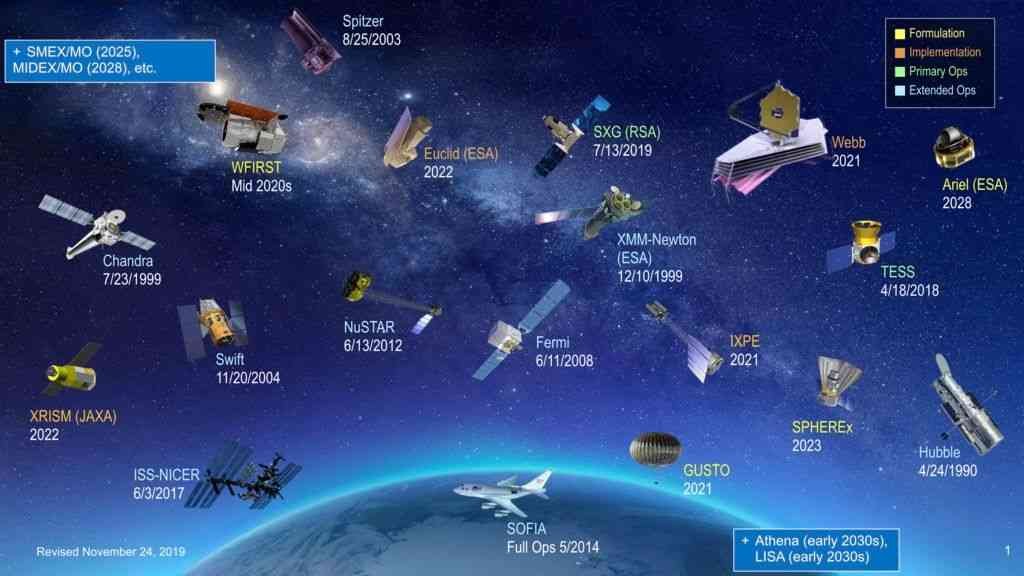Astrophysics: what is it?
Astrophysics (from the Greek aster: star, celestial body and physis: natural science, physics) is an interdisciplinary branch of astronomy, based on physics and chemistry, which initially consisted essentially in measuring and explaining the movements of the stars.
It was not really until the middle of the 19th century that astrophysics proper, in the modern sense, was born with the discovery of the laws of spectroscopy by the physicist Gustav Kirchhoff and the chemist Robert Bunsen, both Germans. It will allow to really study the physical properties of the stars, ie their temperature, their chemical composition, their magnetic field etc… and finally to explain the origins of these properties and not only to make observations concerning them.
We can say that it all started in 1814 with the observations of another German researcher, Joseph von Fraunhofer, who discovered that sunlight could be broken down into a spectrum of colored lines, since called Fraunhofer lines.
Who is the first astrophysicist?
Aristotle, who was the first philosopher to promote a scientific method for a coherent global theory of the physics of the stars, can be considered the father of astrophysics, however different it may be from modern astrophysics.
Astrophysics, from the 19th to the 21st century
Towards the end of the 20th century, the distinction, still very strong in the time of Le Verrier, the discoverer of Neptune, between astronomers preoccupied with measuring angles, distances and masses and linking them to scholarly calculations of the celestial mechanics of a side and astrophysicists seeking to measure and explain the chemical and physical properties of the stars has completely disappeared.
From the observation of the Sun, the Moon and the planets with their satellites before the 19th century, we moved on to the study of stars and galaxies afterwards. For about 50 years, cosmology and cosmogony have been developing and at this very moment, we have been observing the beginnings of exobiology for 20 years.
Astrophysics today
Today, astrophysics has multiple branches involving atomic and molecular physics, nuclear physics, particle physics, the theory of general relativity, plasma physics with MHD (Magnetohydrodynamics) and of course quantum physics, thermodynamics, statistical mechanics and chemistry.
All these sciences are combined in varying degrees to develop the following disciplines:
- Planetology
- Exobiology
- Enstruments
- Stellar physics
- Helioseismology and asteroseismology
- Physics of the interstellar medium
- Astrophysical plasmas
- Galactic physics
- Cosmology
An astrophysics that has become a multi-messenger
Astrophysics has become a multi-messenger. Initially confined for a long time to electromagnetic waves, even if it gradually moved from visible to X-rays then gamma, passing through radio, infrared and ultraviolet waves. We then opened the window of neutrino and gravitational astronomy with detectors such as IceCube, Ligo and Virgo.
Astrophysics has also been revolutionized by the space age which has put into orbit new eyes for humanity, such as Hubble, Planck, Spitzer, Kepler, Chandra and Spektr RG. Its growth was also made possible thanks to probes like Rosetta and Cassini as well as the development of computers allowing powerful digital simulations, giving a new breath to celestial mechanics.
Study method
Theoretical Astrophysics
Theoretical astrophysics tries to predict or simulate celestial phenomena using models. Many astrophysical processes can be described by partial differential equations, for which an exact analytical solution can only be found in exceptional situations.
A widely used method in astrophysics is therefore numerical calculations (numerics) and simulations, which would take days to weeks with a standard PC (2008). In practice, therefore, supercomputers or clusters are often used. The results obtained in this way are compared with observations and checked to see whether they agree.
Observational Astrophysics
The most important method is the spectral analysis of electromagnetic radiation, whereby the observation range extends from long-wave radio waves ( radio astronomy ) to short-wave and thus high-energy gamma rays over about 20 powers of ten.
From the earth, in addition to visible light, the frequency ranges of radio waves and some parts of the infrared range can be observed. Most of the infrared light, ultraviolet light, as well as X-rays and gamma rays can only be observed from satellites because the earth’s atmosphere acts as a filter.
If stars are classified according to spectral classes and luminosity classes, they can be plotted on a Hertzsprung-Russell diagram (HRD). The position in the HRD determines almost all of the star’s physical properties.
The color-brightness-diagram (FHD) can be used to determine the distance.
In addition to individual stars, galaxies and galaxy clusters are primarily observed. For this purpose, ground-based telescopes – often connected together to form clusters – such as e.g. B. HEGRA , as well as space telescopes such as the Hubble Space Telescope used. Satellites with detectors and telescopes are also often launched. In addition, astrophysicists are also interested in the cosmic radiation background.
Laboratory astrophysics
For a long time there were hardly any laboratory experiments in astrophysics. However, the development of new, powerful telescopes from the turn of the millennium ultimately led to the emergence of the sub-field of laboratory astrophysics.
This creates and examines previously unknown molecules. Based on the spectrograms obtained in the laboratory and with the help of large radio telescopes, these molecules can then be detected in interstellar gas clouds. This in turn allows conclusions to be drawn about chemical processes that take place there, for example during star births.
There are only around 20 laboratory astrophysical research groups worldwide, in Germany at the University of Kassel, the Friedrich Schiller University of Jena and the University of Cologne. There are also laboratories that deal with the formation of planets, such as the University of Braunschweig and the University of Duisburg-Essen. In addition to simulations on computers for the collision and growth of dust particles, some laboratory experiments are also carried out here, which are then continued in weightlessness, among other things.
Relation to other branches of physics
In principle, astrophysics is dependent on observations and measurements, because constructed experiments are impossible due to the size of the research objects and the non-reproducibility of one-off cosmological events (big bang).
Due to their small size (e.g. object sizes or angular distances), many of these measurements have a large relative error. Parameters determined indirectly from this (e.g. star masses, ages or distances) are therefore associated with high inaccuracies.
For other measurements, such as B. spectroscopy of the stellar atmospheres or radar measurements on the moon or when flying past objects, or by statistical methods (many independent measurements), however, high accuracies can also be achievedreach.
Despite this fundamental difference to all other physical sub-disciplines, astrophysicists use methods and laws from other areas of physics, in particular from nuclear and particle physics (e.g. detectors for measuring certain particles at certain energies) or start to develop nuclear astrophysics. In theoretical astrophysics, on the other hand, the relationship to plasma physics is particularly close, since many astronomical phenomena such as stellar atmospheres or clouds of matter can be described as plasmas to a good approximation.
Sources: PinterPandai, Space.com, NASA Science, IRFU (Institut de Recherche sur les lois Fondamentales de l’Univers), Center for Astrophysics | Harvard & Smithsonian
Photo credit: NASA Hyperwall
Photo description: Astrophysics fleet.



